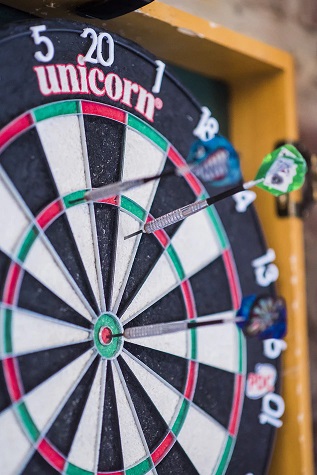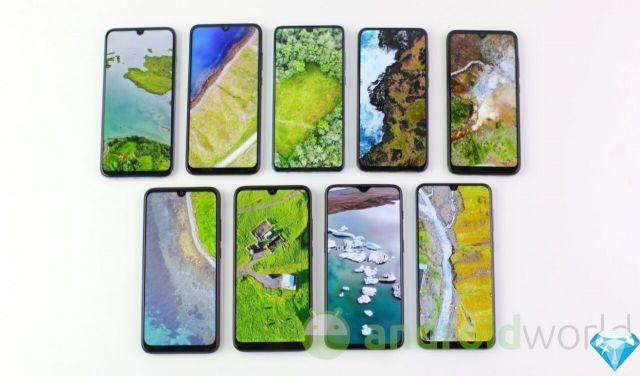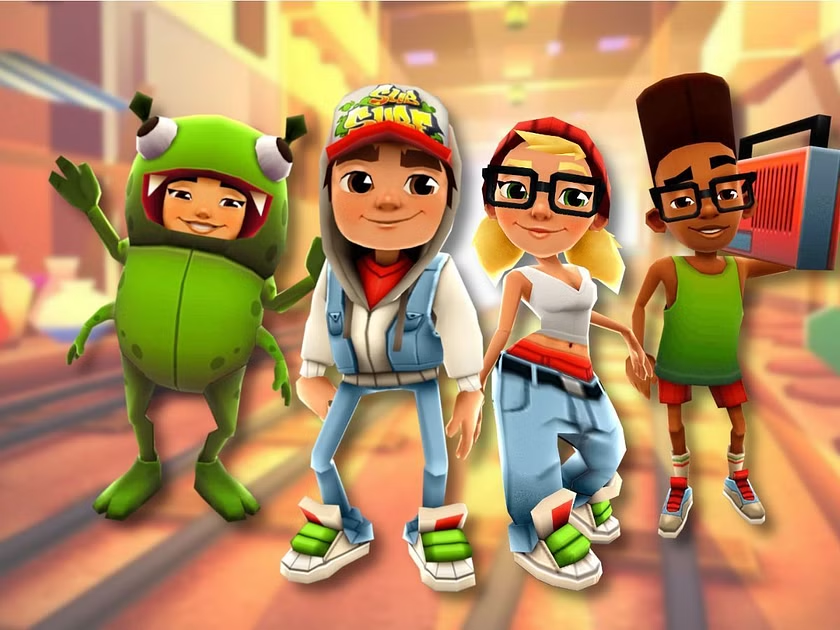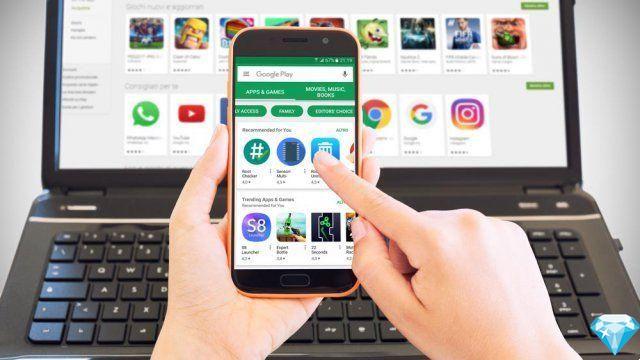
The success of a mobile operating system depends a lot on the applications that are offered to the users. Microsoft knows it very well that it has never managed to conquer a large slice of the market in the world of smartphones due to an online store that did not offer the same number of applications of the App Store and the Google Play Store. One of the secrets of Android's success is its online store which offers users a practically infinite number of applications.
The Google Play Store is one of the applications that Android users find by default on their smartphones and the safest source to download applications. Over the years the growth of the Play Store has been continuous and unstoppable: it has gone from a few dozen applications up to over 2,8 million in just over 10 years. In its 10 years of life, the online store has undergone several transformations: launched in October 2008 as Android Market, initially offered only applications and games. Books, movies, music, and in-app purchases have arrived over the next few years, while in March 2012 it took the name of Google Play Store.
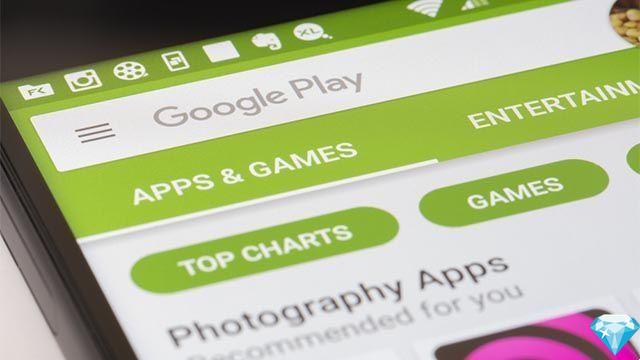
Google's online store has now become a gold mine both for software houses that develop applications and for the Mountain View company which gets a commission of around 30% for every purchase made by users. According to an estimate of App Annie, a company specializing in market analysis in the mobile world, people have spent within the Play Store an amount close to 85 billion dollars between the purchase of applications and in-app expenses for gadgets and upgrades. To make the big voice are the game which represent 41% of the apps downloaded and collect 88% of the revenues produced by the Google Play Store.
Android Market: a bit of history
Il October 22, 2008 is launched Android Market, the official store of the mobile operating system created by Andy Rubin. Android has been on the market for just over a month (the release was made at the end of September 2008) and to convince users to sell their old Nokia and Motorola to embrace the world of smartphones it was necessary to have a store where to offer free applications that improve the functionality of the devices. The beginnings of Android Market they are not simple: after six months the applications available are just over 2000 and the downloads are struggling to increase. The turning point came in 2009 when smartphones began to spread throughout the world and applications to increase. The next year Android Market marks the first record: one billion applications downloaded.
In 2011 the first important updates arrive: the store has a website where you can download applications directly from your PC and transfer them to your Android smartphone, Added Books section and it comes released the ability to make in-app purchases. This latest feature will change the history of Google's online store forever, allowing software houses to capitalize on the investments made in application development.
Here comes the Google Play Store
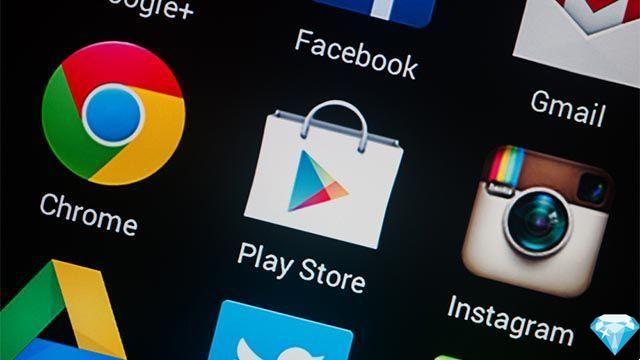
Il March 6, 2012 Android Market changes its name and becomes Google Play Store. For users, very little changes, but for Google it was essential to group all its online activities within an online store. The Play Store becomes the fundamental pivot of Android smartphones, an application present by default on all devices of the green robot sold in Europe. With the new name also comes a restyling of the online store with larger images and contents grouped by categories to facilitate user navigation.
In the following years the Play Store it has always been enriched with new applications and contents: Google has also integrated songs and films into its online store.
Il Google Play Store over the years it has had to face various problems, starting with malware and viruses hidden inside the apps. For this reason, in 2017 Big G released Google Play Protect, a suite of security services that scans the online store daily for harmful apps.
Google Play Store: 10 years of numbers
App Annie made a report on the first 10 years of life of the Google Play Store (formerly Android Market) called "The Data Behind 10 Years of Google Play". The research offers a very interesting overview of Google's online store and allows us to understand how the mobile world has changed in the last decade.
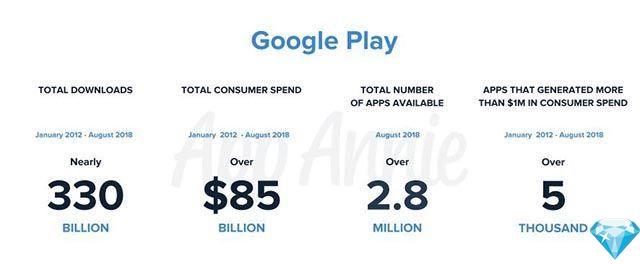
winngems Mobile Full 8,95€/month SIM shipping Free
you discover
Let's start with data that offers a picture of the moment. As of August 2018, the Google Play Store offered 2,8 million applications, more than the number of apps in the App Store. Of all these apps, however, only a small percentage have been successful: 5.000 have generated user spending in excess of a million dollars. Over the past six years (January 2012 to August 2018), the Google Play Store totaled 330 billion downloads e revenues of $85 billion. The money invested by users in the Google Play Store has increased over time: in 2012 the online store had a turnover of just over a billion dollars, at the end of 2018 it exceeded the threshold of 25 billion dollars. And the same goes for downloaded applications: in 2012 there were 20 billion, today over 80 billion.
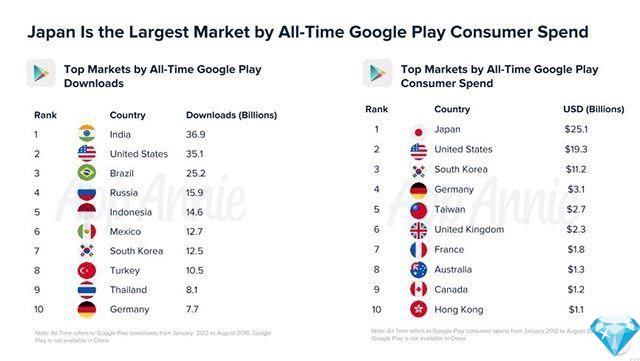
All this success is due in particular to the capillary diffusion of Android smartphones around the world, especially in emerging economies such as India, Brazil, Mexico and Indonesia (the Play Store is not available in China) which represent four of the most important markets for Big G. Scrolling through the ranking with the nations with the highest number of downloads in first place we find India followed by the United States, Brazil, Russia, Indonesia and Mexico. Equally interesting the classic of the nations that have spent the most money in the Google Play Store since its official release: in first place is Japan with 25 billion dollars, followed by the United States with 19 billion and South Korea with 11 billion. Taiwan, a country with just under 25 million inhabitants, spent nearly $3 billion on the Google store. Most of this money ends up in the coffers of software houses that develop video games
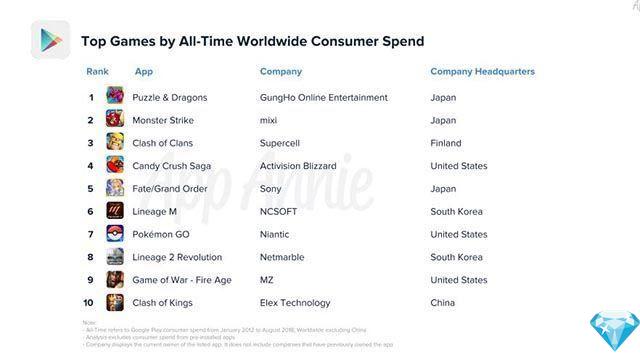
From the research carried out by App Annie, the most interesting data concerns the market share conquered by video games: they represent 41% of the apps in the store, but they 88% of the money users spend on the Google Play Store. A fare la voce grossa i videogame "Puzzle & Dragons" is "Monster Strike"little known in Italy, but widespread among young Japanese.
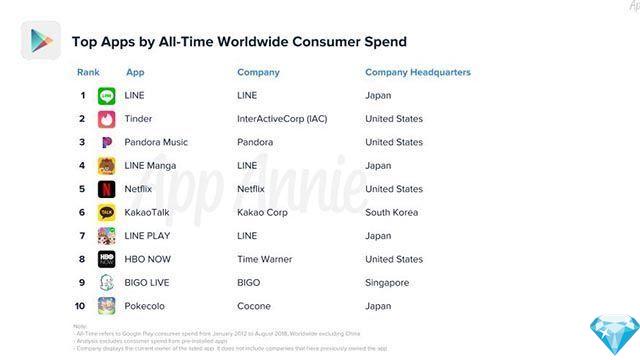
Analyzing the ranking of the apps that have earned the most in recent years (excluding video games) we find Japan once again in the top positions. To the there is first place Line, application similar to WhatsApp, but which also offers paid services, in fourth position Line Manga, at the seventh Line Play and then in tenth Pokecolo.
Google Play Store: what to expect from the future
The Play Store has now become the central hub of the android world. Not only with regard to smartphones, but also smartwatches, smart TVs and computers. The goal for the future is to create a single environment where users will be able to find applications for all their devices within the same space. And this future does not appear to be too distant. There dominant position assumed by the Google Play Store it does not seem to be in danger and it is unlikely that any new competitor will be able to scratch it in the coming years.
January 5 2019
Curated by Cultur-e




